Miami-born Devyn Faith Garcia and her mom, Vogue, March 2023
Hi friends,
I realized I have not included this essay (an extended version was recently published in Europe!) in my Substack. Last year I taught “History of Fashion Photography” at a the university level. Sadly when I started I was only given a lecture as a guideline to the course, it did not include ONE photographer of color and featured only one woman. Sickened by this colonial erasure, I made my own curriculum and in the process I learned so much from my research. In fact, I am going to offer courses online soon but until then here is an essay on why representation matters. Last week at the Mexico City airport I bought Vogue Mexico, I was excited to see some diversity and was really sad that their “beauty” issue featured all-white, rail-thin models. I can assure you that most Mexican women do not look like those models, and that is problematic to me and indicative of the exclusionary, colonial beauty standards that continue to plague fashion magazines!
Representation in the fashion industry has been a hot topic since 2020. While the inclusion of Black models in editorials and print has been gaining traction, the gatekeepers: editors, photographers and the faces that grace the important covers like the September issue of Vogue (it generates the greatest ad revenue) have FINALLY started to shift towards less performative.
As the Brits say, it’s about bloody time.
Did you know that it wasn’t until 2018 that American-born twenty three year-old Tyler Mitchell photographed Beyonce for the aforementioned Vogue September cover, (see image above) making him the FIRST black photographer to shoot a Vogue cover in its 131 year history- that is more than 2,850 Vogue covers shot by mainly (surprise! surprise!) white men.
“Toni” Photography Tyler Mitchell, 2019
Here is what Beyoncé had to say about diversity in fashion photography:
“Until there is a mosaic of perspectives coming from different ethnicities behind the lense, we will continue to have a narrow approach and view of what the world actually looks like. That is why I wanted to work with this brilliant 23-year-old photographer Tyler Mitchell…If people in powerful positions continue to hire and cast only people who look like them, sound like them, come from the same neighborhoods they grew up in, they will never have a greater understanding of experiences different from their own. They will hire the same models, curate the same art, cast the same actors over and over again, and we will all lose."
Portrait by Tyler Mitchell
Similarly, the first Vogue cover shot by a Black female photographer didn't happen until London-born Nadine Ijewere (Nigerian-Jamaican heritage) shot Selena Gomez in 2021. She is the FIRST woman of color to shoot the cover of any Vogue in the magazine’s 131-year global history, shocking huh?
As a teenager growing up in Dallas. Tx in the pre-internet era I spent hours combing through fashion magazines, yet nobody ever looked like me. I immigrated to the US with my mother at age 5, and (true story) when she initially told me we were moving there I asked her if it meant I would have blond hair and blue eyes. Somehow in Ecuador I had already I internalized beauty standards because all of the movies and dubbed ads featured light-skinned blondies who matched that criteria. In Ecuador when someone produces a lighter skin child I remember people remarking they "mejoraron la raza" literally they "bettered the race." When I accompanied my mother anywhere as a child I begged her not to speak to me in Spanish, I recognize that now as internalized racism. Now I thank her daily for having sent me to live with my grandmother in Ecuador during the summer. There were only two, maybe three Latin kids in my entire school, and it was not until much later that I understood that being bilingual is the ultimate privilege. I wish I had seen more Latinas represented during all those hours of sitcom viewing as a kid, as a latch-key kid I learned English thanks to the 1970 era after-school PBS programing. But aside from Maria on Sesame Street nobody else looked familiar.
And this is why representation, whether in TV, movies, politics, Academia, or on the cover of Vogue, matters, a lot. Collective ideas of beauty are nurtured by what we see on these covers, and if the industry is only promoting thin white women shot by men, then we are left with a pretty narrow and distorted idea of what constitutes beauty.
Below is another favorite cover, this time it is a Spanish Vogue shot by Nadine Ijewere that features model Paloma Essler. Another milestone is seeing women that look like her ( P.S. I loathe the term plus size because once again it implies that the norm is thin) on the cover of magazines. Let's all normalize diversity of body sizes, colors, genders and shapes! She is mixed race and not rail thin, thus promoting not only a less punishing beauty standard but hopefully ending the tyranny that one has to not eat in order to make it as a successful model. Or as she stated, “being more conscious that when someone’s killing it, they might literally be killing themselves.”
Because I mentioned gatekeepers earlier I will end with Ghanian-British Edward Enninful, the Editor in Chief of British Vogue. Recently Time magazine called him the most important Black man in the fashion industry. I recently re watched the 2009 Documentary "The September Issue" (which I highly recommend), where you will see a younger Mr. Enninful cowering (like every other person in the industry) to a very Cruella de Ville Anna Wintour, who is now his equal as EIC of American Vogue. For a really long time Wintour pretty much dictated who made the cut, and to out it mildly, her reign looked pretty white and skinny. I think times are changing, and what is deemed "normal" and desirable is finally being shown through a different lens, no pun intended. I love this quote by Enninful describing his admittance into the higher echelons of global taste makers: “I was always othered, you know, gay, working-class, Black. So for me it was very important with Vogue to normalize the marginalized, because if you don’t see it, you don’t think it’s normal.”
This last image was styled by Enniful and shot by 30 year old Brazilian photographer Rafael Pavarotti who grew up in the Amazon Rain Forest and left for London at age sixteen. His work is drop-dead stunning and his Afro-Indigenous Brazilian heritage is reflected in the richly saturated images he produces. I leave you with a final quote by this rising star in the world of fashion:
“The celebration of Black and indigenous experience specifically will always be a part of my work, because it’s also a part of me. As an Afro-Indigenous Brazilian photographer, my existence and work are already political,”
Representation matters, and images are never neutral.
Photo Rafael Pavrotti
And finally s personal and bonus note to this essay is a shout out to bonkers beautiful Miami- born model Devyn Faith Garcia (who used to live in my building, eat and play with my kids!). Garcia is the mixed-heritage, Latina, down-to-earth woman who I wish I had seen in the page of Vogue as a teen!!!
Devyn on the cover of ID, June 2023
My dad’s side is Spanish; my great grandparents emigrated to Cuba from the Canary Islands, had my grandma, and came to Miami, Florida. My mom on the other hand was adopted by my grandparents in West Virginia and they said her mother was Native American and her father was mixed, half white half black. -DFG


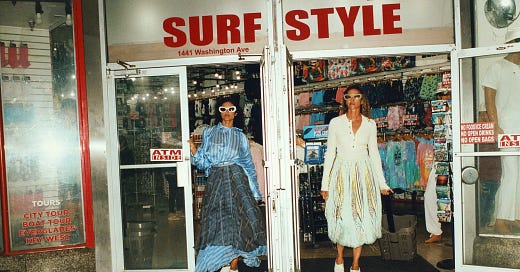



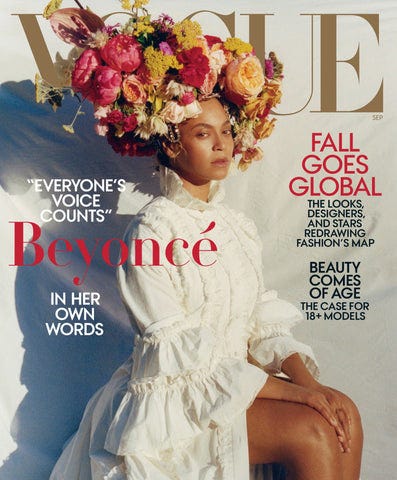




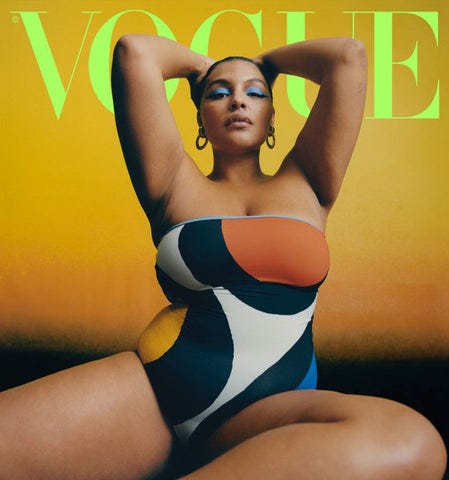
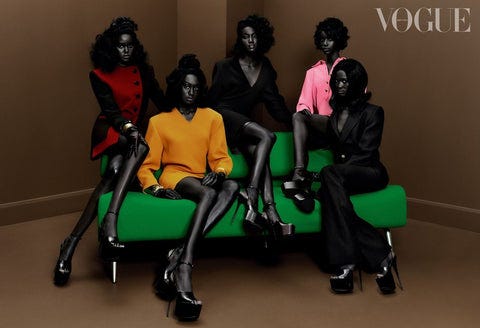
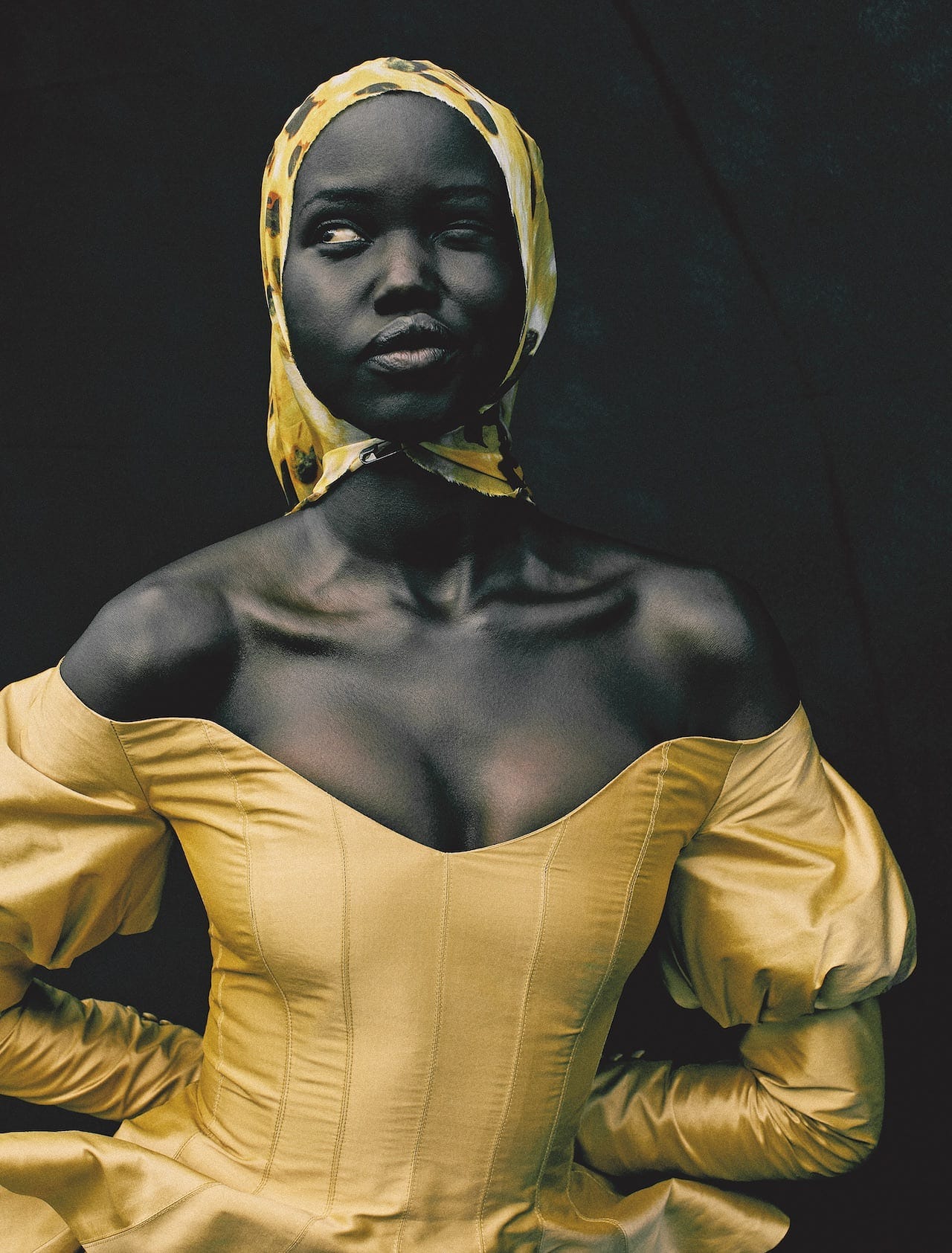


So informative and spot-on. A really fine read and assessment.
Thanks, Veronica.
Such great writing, as always!! I love the way you stereotype the different origins and cultures 👍🏼💖